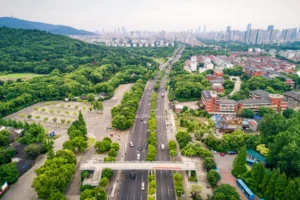Kenya’s latest infrastructure ambition, the Usahihi Expressway, has been announced with the usual fanfare: a presidential commitment, signing ceremonies, and promises of economic transformation. Though construction has yet to begin, the highway is envisioned as a key driver of Kenya’ssustainable development, funded through a mix of concessional loans, public-private partnerships, and hopeful optimism.
The Price of Progress: GDP Growth or a Growing Debt?
With a projected price tag of $1.2 billion, the Usahihi Expressway is being marketed as a catalyst for economic transformation, expected to boost GDP by 2.5% annually. Government officials argue that improved logistics, reduced congestion, and faster trade routes will attract investors and stimulate economic growth. However, skeptics warn that the financing model could push Kenya’s debt-to-GDP ratio even higher. Institutions like the World Bank and IMF are watching closely, calculating the potential risks of another massive infrastructure commitment.
Climate Resilience or Greenwashing?
Infrastructure and sustainability go hand in hand in modern development discourse. Officials insist that the Usahihi Expressway will be a model of green engineering, featuring solar-powered toll booths, noise-reducing asphalt, and trees planted along the median. However, environmentalists remain cautious, questioning the potential displacement of local communities, increased carbon emissions from induced traffic, and whether the project will truly promote sustainability or simply add to Kenya’s infrastructure debt.
The Social Divide: Inclusive Growth or an Exclusive Road?
The economic impact of the expressway will largely depend on accessibility. If the toll pricing favors the wealthy, then affluent businesspeople and expatriates will enjoy faster commutes while everyday commuters, boda-boda riders, and matatu users continue to navigate congested and deteriorating alternative routes. If inclusivity is a goal, the project will need to balance private investment interests with public accessibility.
A Road to Redemption or a Runway for Elites?
Kenya has long turned to infrastructure as a means of economic growth, hoping to unlock trade corridors and enhance regional integration. However, history has shown that roads alone do not resolve deeper economic disparities. While the Usahihi Expressway promises efficiency and modernity, its true impact will depend on execution, financing, and equitable access.
For now, Kenyans will wait and watch. Will the expressway pave the way for economic growth, or is it another grand vision yet to materialize? Only time will tell, but for now, the traffic remains unchanged.



